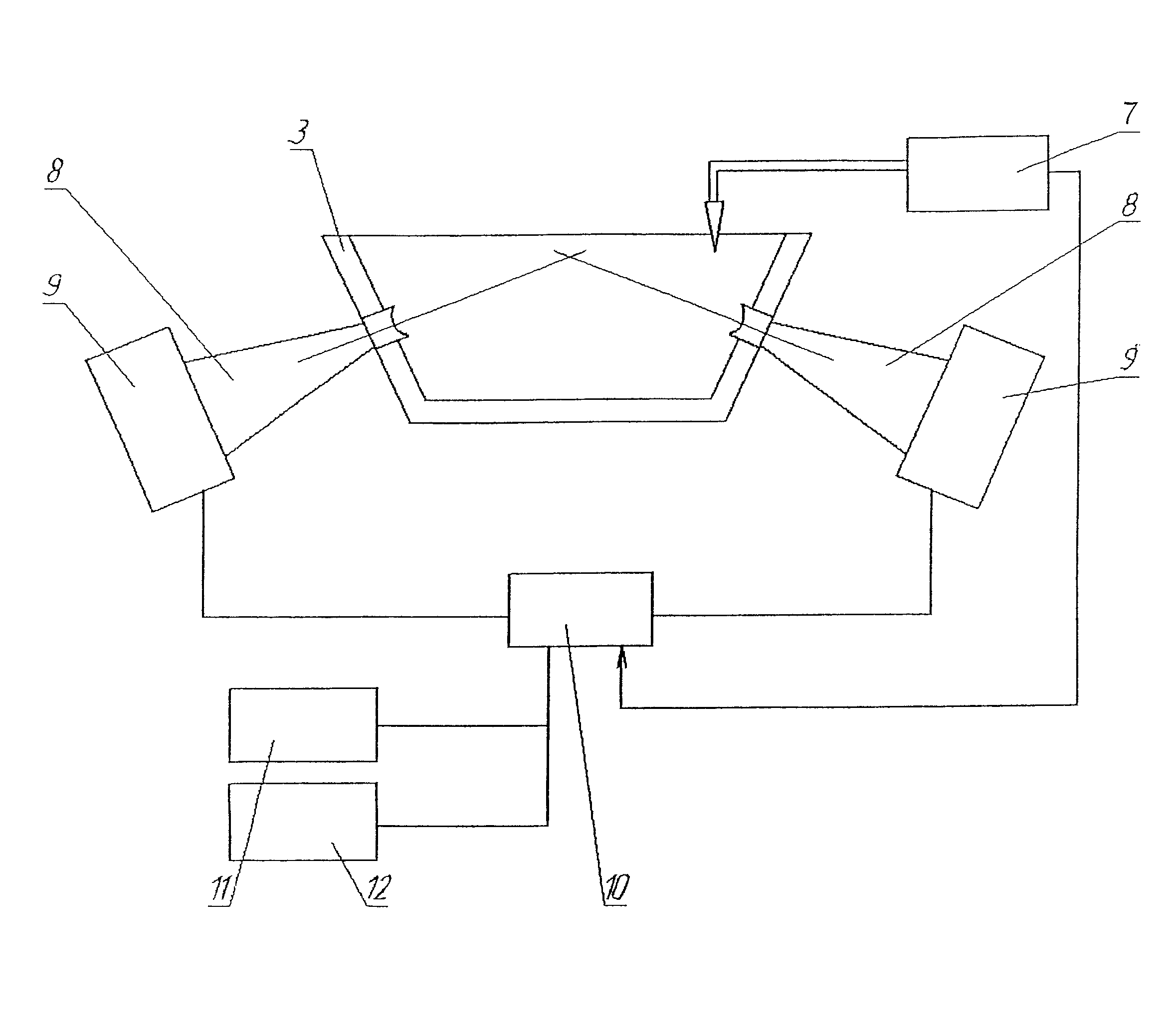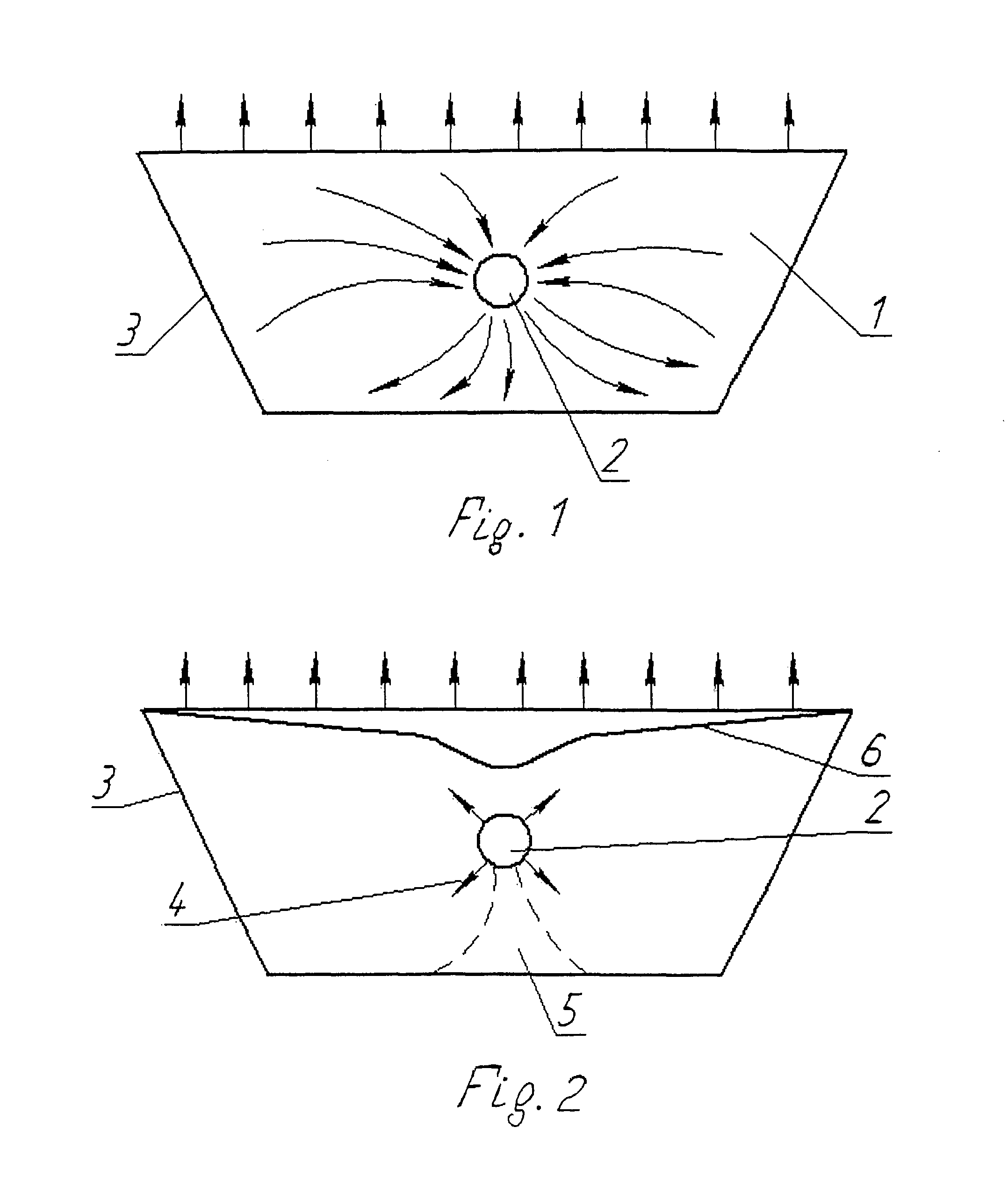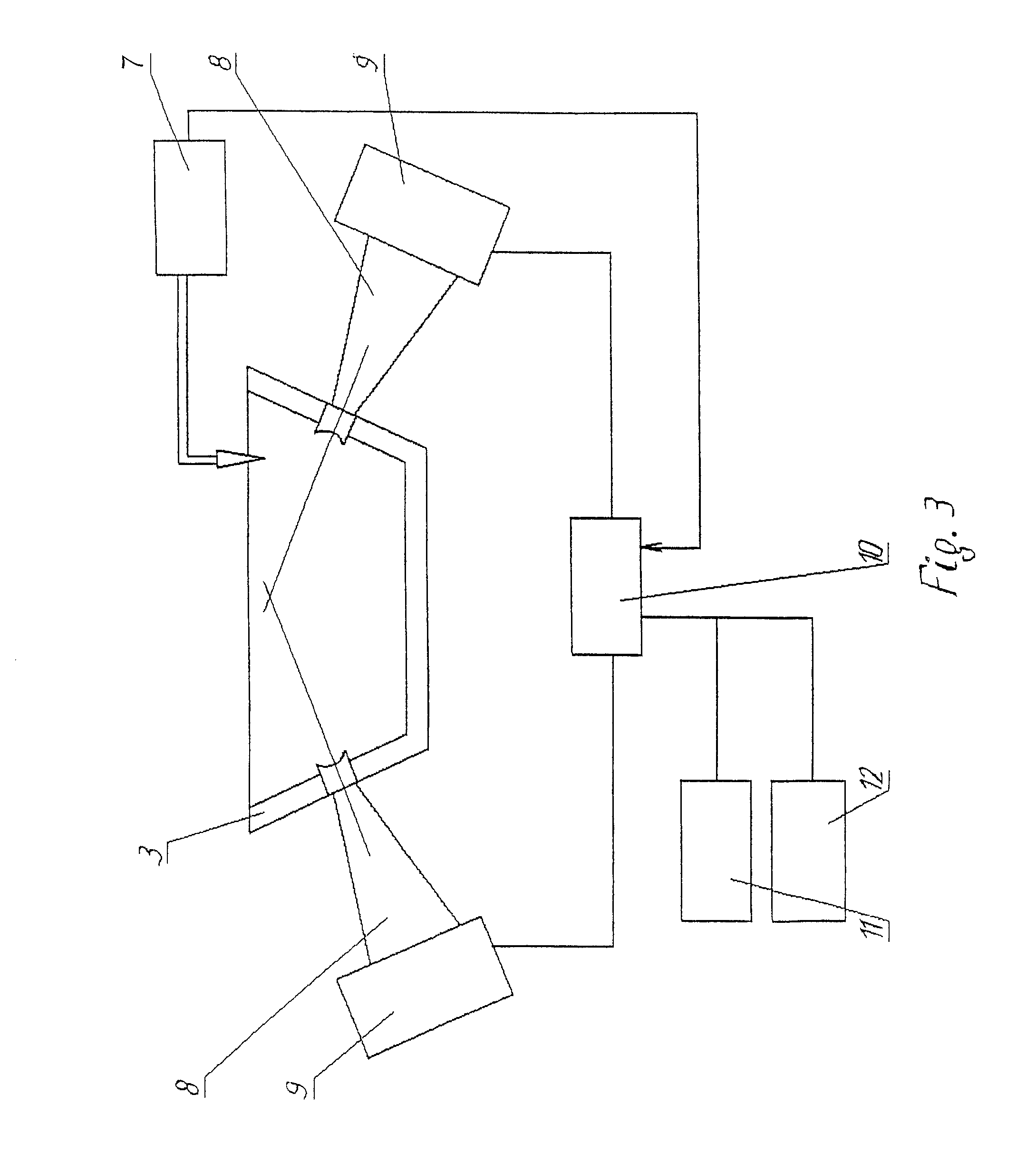Method for making castings by directed solidification from a selected point of melt toward casting periphery
a technology of melting and casting periphery, applied in the field offoundry practice, can solve the problems of increasing the pressure within the melt, provoking the release of dissolved gases into the melt, and variable grain size, and achieve the effect of improving the isotropy of the resulting casting structur
- Summary
- Abstract
- Description
- Claims
- Application Information
AI Technical Summary
Benefits of technology
Problems solved by technology
Method used
Image
Examples
Embodiment Construction
[0024]In principle, a directed solidification method consists in making use of a physical phenomenon that can control reduction in the energy state of a melt to a level where solidification begins. Until recently, practically all solidification control methods have been confined to influencing the thermal processes occurring in the melt. To do so, apparatuses maintaining desired temperature gradients in the melt were used for solidification control purposes. Directed heat removal at desired intensity allows preferred conditions to be created for initiating solidification in a desired zone of the melt, which is actually the most widespread form of directed solidification. This directed solidification option is effective enough if applied to castings of small size. This limitation is explained by the fact that the temperature field within the melt is distorted during melt solidification, releasing latent solidification heat in the process, that is, it distorts (reduces) the temperatur...
PUM
| Property | Measurement | Unit |
|---|---|---|
| volume cooling rate | aaaaa | aaaaa |
| temperature | aaaaa | aaaaa |
| solidification point | aaaaa | aaaaa |
Abstract
Description
Claims
Application Information
 Login to View More
Login to View More - R&D
- Intellectual Property
- Life Sciences
- Materials
- Tech Scout
- Unparalleled Data Quality
- Higher Quality Content
- 60% Fewer Hallucinations
Browse by: Latest US Patents, China's latest patents, Technical Efficacy Thesaurus, Application Domain, Technology Topic, Popular Technical Reports.
© 2025 PatSnap. All rights reserved.Legal|Privacy policy|Modern Slavery Act Transparency Statement|Sitemap|About US| Contact US: help@patsnap.com



